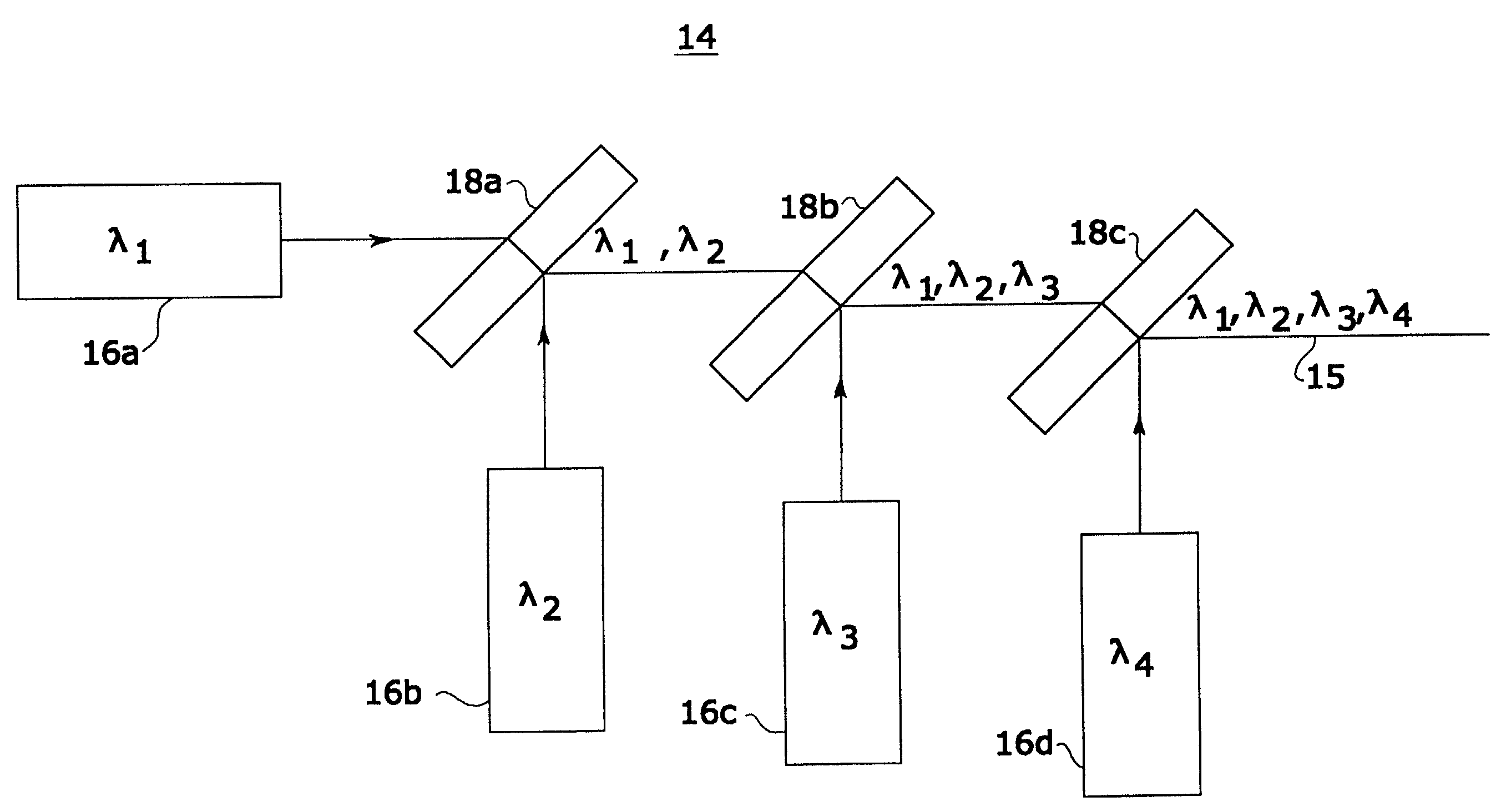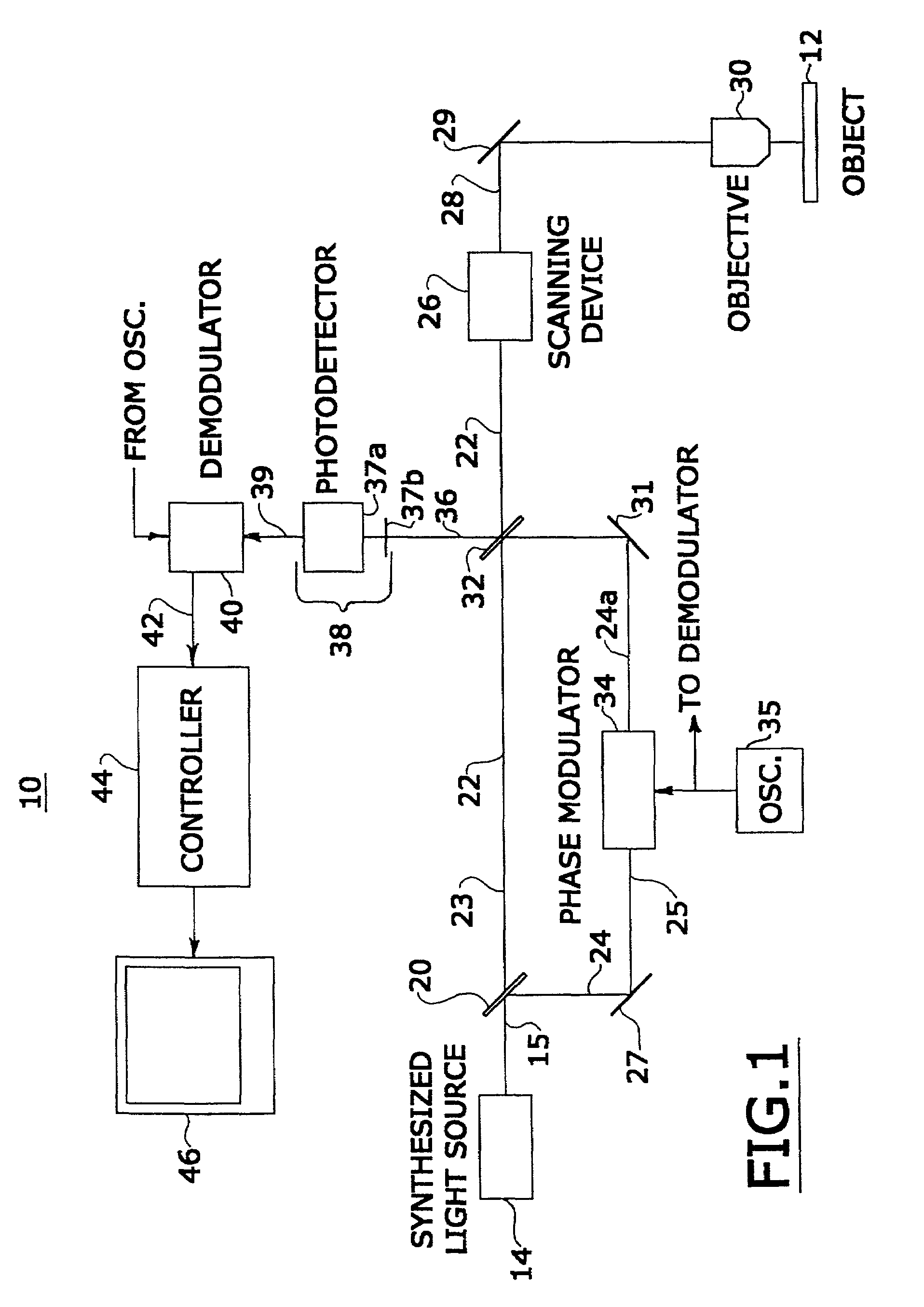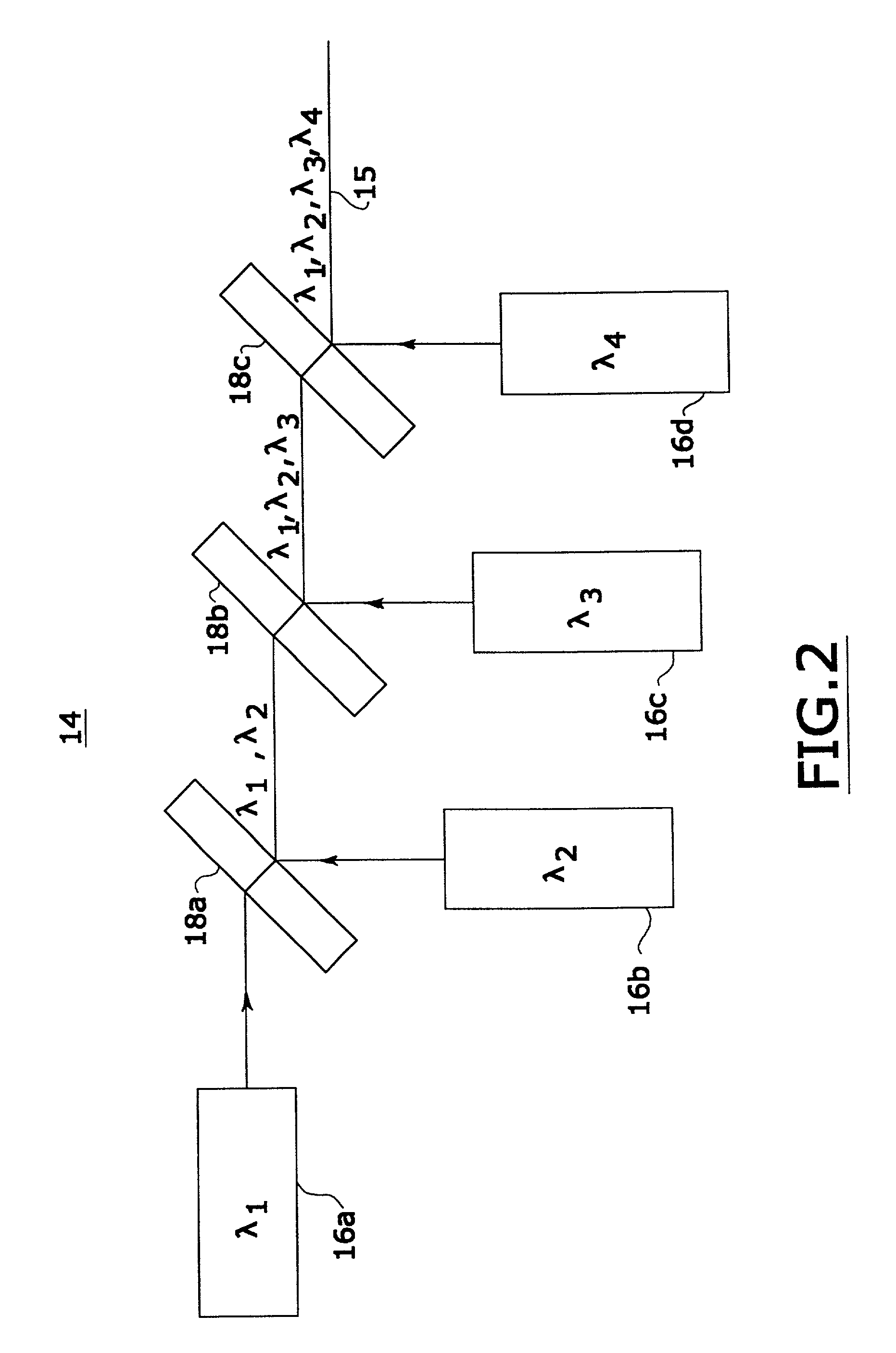Confocal microscopy
a technology of confocal optics and microscopes, applied in the field of confocal microscopy, can solve the problems of large and expensive, limited depth resolution of apparatuses, and inability to utilize confocal optics for microscopic imaging
- Summary
- Abstract
- Description
- Claims
- Application Information
AI Technical Summary
Benefits of technology
Problems solved by technology
Method used
Image
Examples
Embodiment Construction
[0017]Referring to FIG. 1, a confocal microscope system 10 is shown for producing images of sections of an object 12, such as a tissue sample or in-vivo tissue of patient, below the surface of the object. System 10 includes a synthesized light source 14 providing a single beam 15 having several, different wavelengths of light. Synthesized light source 14 includes a number (N) of multiple light sources each providing light beams at a different wavelength, which are combined into a single beam 15. Beam 15 thus represents light that has a coherence function with narrow peaks depending on the wavelengths (or frequencies) of each of the multiple light sources of synthesized light source 14. The wavelengths of the light sources of the synthesized light source are selected to be transparent to object 12 to a particular depth from the object's surface. For tissue, such transparency occurs in the infrared spectrum of light.
[0018]An example of synthesized light source 14 with four light sourc...
PUM
 Login to View More
Login to View More Abstract
Description
Claims
Application Information
 Login to View More
Login to View More - R&D
- Intellectual Property
- Life Sciences
- Materials
- Tech Scout
- Unparalleled Data Quality
- Higher Quality Content
- 60% Fewer Hallucinations
Browse by: Latest US Patents, China's latest patents, Technical Efficacy Thesaurus, Application Domain, Technology Topic, Popular Technical Reports.
© 2025 PatSnap. All rights reserved.Legal|Privacy policy|Modern Slavery Act Transparency Statement|Sitemap|About US| Contact US: help@patsnap.com



